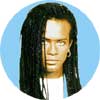 |
Shrine to Rob ‘n’ Fab
By staff music critic Jeff Spevak
Yeah, musicians were still recording blues, jazz and even significant rock albums – Prince’s Purple Rain, Bruce Springsteen’s Born In The USA – in the ‘80s. But the decade seems unable to shake the stigma of Milli Vanilli, Billy Idol and Tears for Fears’ Music From The Big Chair.
In the ‘80s, only two music-industry points mattered, and we’re not talking about Madonna’s torpedo bra:
1. It opened as the disco-free era. The onslaught of England’s Sex Pistols and the Clash, the notorious Disco Sucks event at Chicago’s Comiskey Park, in which a DJ blew up a pile of albums, brought disco to a crashing halt in 1979. Today, if you want to play disco, you call it “Madonna’s new album”. Despite the intense disco backlash, the repetitive bass beat heard on today’s dance floors – whether it’s house, trance or drum ‘n’ bass – is disco in a more sophisticated package than the Village People had to offer.
2. MTV debuted. MTV changed everything when it hit the air on August 1, 1981, with the Buggles’ Video Killed The Radio Star.
It’s so prevalent today that we can accept without a raised eyebrow that the talentless residents of MTV’s The Real World are stars worthy of People Magazine profiles. Because of MTV, debut albums by Britney Spears and ‘N Sync can have the same kind of impact once enjoyed by Bob Dylan. It was the ‘80s that devalued celebrity, when it was discovered that musicians of dubious talent could be stars simply because they looked right. Only MTV could have made a star of Cindi Lauper.

 |
So why are the 80’s so hot right now?
“I don’t know”, Mike Dailor says. “I only know how to capitalize on it.”
Dailor runs “The Underground 80’s” in the Dungeon room at the dance club Piranah, 204 N. Water Street. Every Saturday night, real people pay $6 to dance to 80’s music.
But his crowd turns its back on Grandmaster Flash and the Cover Girls in favor of dancing to the dark Gothic sounds of the Sisters of Mercy, The Cure and Bauhaus.
Some of this nostalgia is welcome. Prince has announced that he will once again answer to his ‘80s handle – an era when he made his best music. The B-52s have never seemed irrelevant because the band takes its kitsch seriously. But ticket buyers have generally had a lukewarm response to reunion tours over the last couple of years featuring Culture Club, Howard Jones, the Bangles and the Go-Gos. And Poison and Motley Crue’s reason for existence seems to be simply to help VH1: Behind The Music fill an hour.
“People have a tendency to be dinosaurs,” the 42-year-old Dailor says. “You just have to figure out what kind of dinosaur you want to be. Thank God we’re wearing different clothes, though; I don’t see too many acid-washed jeans these days.”
Dailor promotes his event at www.underground80s.com. And he’s taken the ‘80s into the 21st century, working as a DJ with just two laptop computers and a hard drive on which he’s stored thousands of songs from his CD and vinyl collection, and thousands more downloaded from the ‘Net.
Starting at 2 a.m. at “The Underground ‘80s”, Dailor assembles the “Gothic Industrial Butt-Rock Mosh Pit of Doom,” in which the ‘80s meets its future. “I’ll play Twisted Sister, then Type-O Negative, then some Nine Inch Nails or Ministry, then back to Ratt or Queensryche. It ain’t over until they can’t dance any more.”
And the ‘80s gets respect, Dailor insists, recalling an evening in which he played a row of hair-band rockers. “I looked up and saw a group of people actually standing, holding their Zippo lighters in the air, all lit.”